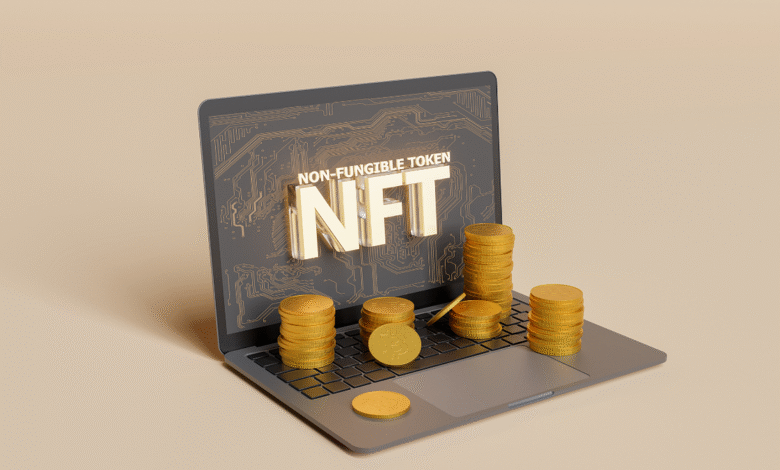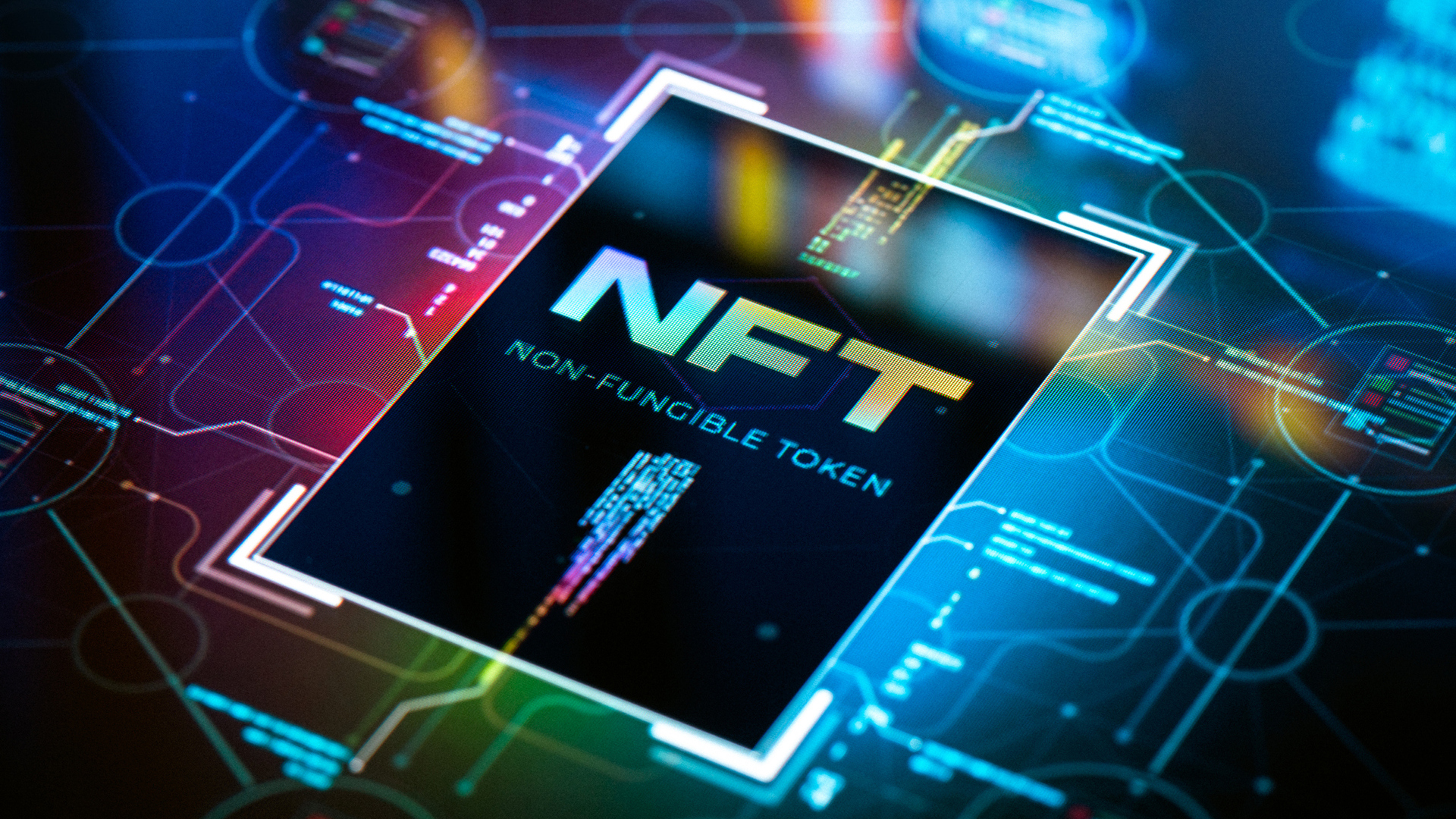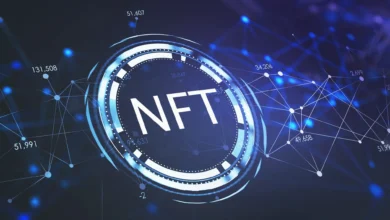Master NFT Portfolio Investment Strategy 3 Expert Tips

The digital asset revolution has fundamentally transformed investment landscapes, with NFT portfolio investment strategy becoming a cornerstone of modern wealth building. As non-fungible tokens continue to mature beyond mere digital collectibles into serious investment vehicles, savvy investors are recognizing the immense potential within this emerging market. The NFT investment space has evolved dramatically, requiring sophisticated approaches to portfolio construction and management.
Understanding how to master NFT portfolio allocation has become essential for both traditional investors seeking diversification and digital natives exploring new wealth creation opportunities. The volatile nature of blockchain-based assets demands strategic thinking, comprehensive market analysis, and disciplined risk management practices that distinguish successful investors from casual speculators.
Today’s NFT market presents unprecedented opportunities for those willing to navigate its complexities with informed decision-making. From blue-chip collections commanding millions to emerging utility-based projects offering real-world value, the spectrum of NFT investment opportunities has expanded exponentially. However, success in this space requires more than simply purchasing popular collections or following trending projects.
The key to building a profitable digital asset portfolio lies in implementing proven strategies that account for market volatility, technological innovation, and evolving consumer preferences. Professional investors are increasingly viewing NFTs as alternative assets that can enhance traditional investment portfolios while providing exposure to the rapidly growing digital economy.
This comprehensive guide reveals three expert-validated approaches to NFT portfolio management that have consistently generated superior returns for informed investors. These strategies encompass diversification methodologies, risk assessment frameworks, and market timing techniques that form the foundation of successful long-term NFT investment success. Whether you’re beginning your journey or seeking to optimize existing holdings, these insights will elevate your investment approach.
Understanding NFT Portfolio Investment Fundamentals
What Makes NFT Investments Unique
NFT portfolio investment strategy differs significantly from traditional asset classes due to the unique characteristics of blockchain-based digital assets. Unlike stocks or bonds, NFTs derive value from provenance, scarcity, utility, and community engagement rather than cash flows or earnings. This fundamental difference requires investors to develop new analytical frameworks for evaluating potential investments.
The NFT market operates on principles of digital ownership verification, creator royalties, and smart contract functionality that create entirely new value propositions. Understanding these technical foundations becomes crucial for making informed NFT investment decisions and avoiding costly mistakes that plague inexperienced investors.
Digital asset portfolios must account for factors like blockchain network effects, marketplace liquidity, and technological adoption rates that don’t exist in traditional markets. These unique characteristics create both opportunities and risks that demand specialized knowledge and strategic thinking.
Market Dynamics and Investment Opportunities
The current NFT investment landscape spans multiple categories, each presenting distinct risk-reward profiles and growth trajectories. Art collections like CryptoPunks and Bored Ape Yacht Club represent the blue-chip segment, offering established market liquidity and brand recognition. Gaming NFTs provide utility-based value through in-game functionality and play-to-earn mechanisms.
Virtual real estate in metaverse platforms creates investment opportunities tied to digital world development and user adoption. Music NFTs enable artists to monetize their work directly while providing fans with exclusive access and ownership rights. Each category requires different evaluation criteria and investment approaches.
NFT market trends indicate growing institutional adoption, increased utility integration, and expanding use cases beyond simple collectibles. These developments suggest NFT investments are transitioning from speculative assets to legitimate components of diversified investment strategies.
Expert Tip #1: Strategic Diversification Across NFT Categories

Building a Multi-Category NFT Portfolio
The foundation of a successful NFT portfolio investment strategy begins with strategic diversification across multiple asset categories and blockchain ecosystems. Diversifying investments across various NFT categories like art, gaming, and virtual real estate helps spread risk and potentially offset losses in one area with gains in another. This approach mirrors traditional portfolio theory while adapting to the unique characteristics of digital assets.
Professional NFT investors typically allocate holdings across five core categories: established art collections (30-40%), gaming and utility NFTs (20-30%), virtual real estate (15-25%), music and entertainment (10-15%), and experimental or emerging projects (5-10%). This distribution provides stability through blue-chip holdings while maintaining exposure to high-growth opportunities.
Portfolio diversification within the NFT space requires understanding correlation patterns between different asset types. Art NFTs often move independently of gaming assets, while virtual real estate may correlate with metaverse platform adoption. Recognizing these relationships enables more effective risk management and return optimization.
Cross-Chain Diversification Strategy
Modern NFT portfolio management must account for blockchain diversification beyond the dominant Ethereum ecosystem. Solana, Polygon, and other networks offer unique projects and often lower transaction costs, creating opportunities for early-stage investments and reduced operational expenses.
Cross-chain strategies require technical understanding of different blockchain characteristics, including transaction speeds, costs, security models, and ecosystem maturity. Investors should allocate 60-70% to Ethereum-based projects for stability while exploring 20-30% in alternative blockchains for growth potential.
Digital asset allocation across multiple chains also protects against network-specific risks, including congestion, high fees, or technological challenges that might impact a single blockchain ecosystem.
Creator and Project Diversification
Successful NFT investment strategies avoid over-concentration in projects from single creators or development teams. Spreading investments across established artists, emerging creators, and institutional projects reduces dependency on individual success while providing exposure to various market segments.
Supporting a mixture of creators avoids dependency on a singular source and creates a more resilient investment portfolio. This approach includes allocating funds across different experience levels, artistic styles, and project types to maximize diversification benefits.
Geographic and cultural diversification also plays a role, as NFT creators from different regions may appeal to various market segments and experience different growth trajectories based on local adoption patterns and cultural preferences.
Expert Tip #2: Advanced Risk Management Techniques
Comprehensive Risk Assessment Framework
Implementing robust risk management practices forms the cornerstone of a sustainable NFT portfolio investment strategy. Unlike traditional assets, NFTs present unique risks, including smart contract vulnerabilities, marketplace dependency, and liquidity constraints that require specialized assessment methodologies.
NFTs introduce unique risks, such as market volatility and liquidity issues, requiring proper risk management strategies when incorporating NFTs into an investment portfolio. Professional investors utilize multi-dimensional risk frameworks that evaluate technical, market, regulatory, and operational risks before making investment decisions.
The assessment process includes analyzing smart contract audits, evaluating marketplace reputation, reviewing creator track records, and assessing community engagement metrics. Each factor contributes to the overall risk scoring that guides position sizing and holding period decisions.
Position Sizing and Capital Allocation
Effective NFT investment requires disciplined position sizing that accounts for the high volatility and illiquid nature of digital collectibles. Most successful investors limit individual NFT positions to 2-5% of total portfolio value while maintaining larger allocations for established collections with proven liquidity.
Portfolio allocation should reflect risk tolerance and investment objectives, with conservative investors focusing on blue-chip collections (60-70% allocation) and aggressive investors exploring emerging projects (up to 40-50% allocation). Position sizing adjustments based on market conditions help optimize risk-adjusted returns.
Stop-loss strategies in NFT investing require different approaches than traditional assets due to illiquidity and pricing inefficiencies. Time-based exit strategies often prove more effective than price-based stops, with predetermined holding periods and regular portfolio reviews driving decision-making.
Liquidity Management and Exit Strategies
NFT market liquidity varies dramatically across collections and time periods, making exit planning crucial for portfolio success. Investors should maintain detailed records of purchase prices, holding periods, and market conditions to inform optimal selling decisions.
Developing relationships with collectors, dealers, and institutional buyers creates alternative liquidity sources beyond public marketplaces. These connections become valuable during market downturns when public market liquidity deteriorates and direct sales provide better pricing.
Tax considerations significantly impact NFT exit strategies, with holding periods affecting capital gains treatment and transaction timing influencing annual tax obligations. Professional investors coordinate exit strategies with tax planning to optimize after-tax returns.
Expert Tip #3: Market Analysis and Timing Strategies
Technical Analysis for NFT Markets
Advanced NFT investment strategies incorporate technical analysis adapted for digital asset markets, focusing on floor price movements, trading volume patterns, and marketplace activity metrics. Developing trading strategies based on factors such as price patterns, market sentiment, and NFT rarity increases chances of success in this volatile market environment.
NFT market analysis requires understanding unique metrics, including holder distribution, daily active traders, social media sentiment, and marketplace listing rates. These indicators provide insights into collection health and potential price movements that traditional technical analysis might miss.
Chart analysis for NFTs focuses on floor price trends, volume-weighted average prices, and marketplace spread patterns rather than traditional candlestick formations. Successful investors develop proficiency in reading these NFT-specific indicators to time entries and exits effectively.
Fundamental Analysis and Project Evaluation.
A comprehensive NFT portfolio investment strategy includes fundamental analysis that evaluates project teams, roadmaps, utility propositions, and community strength. This analysis helps identify projects with sustainable long-term value beyond speculative interest.
Key fundamental factors include team experience and track record, technological innovation, partnership quality, community engagement levels, and revenue generation potential. Projects scoring highly across these metrics typically demonstrate better resilience during market downturns and stronger long-term appreciation.
Digital asset evaluation also considers tokenomics, supply mechanisms, and utility integration that drive sustainable demand. Projects with clear value propositions and active development tend to outperform purely speculative collections over time.
Market Cycle Recognition and Timing
Understanding NFT market cycles enables strategic entry and exit timing that significantly impacts investment returns. NFT markets typically follow crypto market cycles but with additional volatility and sentiment-driven movements that create both opportunities and risks.
Bull market strategies focus on momentum investing and growth collection identification, while bear market approaches emphasize accumulation of blue-chip assets at discounted prices. Recognizing cycle transitions allows investors to adjust portfolio composition and risk levels accordingly.
Selling during a peak in interest can maximize returns, making market timing skills valuable for optimizing portfolio performance. However, consistent timing requires patience and discipline to avoid emotional decision-making during volatile periods.
Community and Social Sentiment Analysis
NFT investment success increasingly depends on community strength and social media sentiment, which drive adoption and price appreciation. Monitoring Discord activity, Twitter engagement, and Reddit discussions provides insights into project momentum and potential price movements.
Social sentiment analysis tools help quantify community engagement and identify emerging trends before they reach mainstream attention. Early identification of strong communities enables investors to participate in growth phases while avoiding projects with declining social interest.
NFT market trends often originate from community-driven initiatives and social media campaigns, making sentiment analysis a valuable component of comprehensive investment strategies. Successful investors develop systems for monitoring multiple social platforms and community channels.
Common Mistakes to Avoid in NFT Portfolio Management

Emotional Decision Making and FOMO
The fast-paced nature of NFT markets often triggers emotional responses that lead to poor investment decisions. Fear of missing out (FOMO) drives impulsive purchases at market peaks, while panic selling during downturns locks in losses and prevents recovery participation.
Successful NFT investors develop systematic approaches that remove emotion from investment decisions through predetermined entry and exit criteria. This disciplined methodology helps avoid common pitfalls that plague inexperienced investors in volatile markets.
Establishing clear investment objectives and risk parameters before entering positions prevents emotional overrides that compromise portfolio performance. Regular portfolio reviews and rebalancing maintain strategic focus during market turbulence.
Neglecting Due Diligence
Inadequate research represents one of the most costly mistakes in NFT investment, with investors often purchasing projects based on social media hype rather than fundamental value. Comprehensive due diligence includes smart contract verification, team background checks, and utility assessment.
NFT scams and rug pulls remain prevalent, making thorough project evaluation essential for protecting capital. Professional investors verify all claims, review audit reports, and assess long-term viability before committing funds to new projects.
Community verification and marketplace legitimacy checks prevent investment in fraudulent or low-quality projects that damage portfolio performance. Spending adequate time on research pays dividends through improved investment outcomes and risk reduction.
Inadequate Portfolio Tracking and Management
Many NFT investors lack systematic approaches to portfolio tracking, making performance evaluation and optimization difficult. Comprehensive tracking includes purchase prices, current valuations, holding periods, and tax implications for all positions.
Regular portfolio rebalancing ensures alignment with investment objectives and risk tolerance as market conditions change. Without systematic management, portfolios may drift toward excessive concentration or misaligned risk profiles.
Professional portfolio management tools designed for digital assets provide automated tracking, performance analytics, and tax reporting that streamline administrative requirements and improve decision-making capabilities.
Building Long-Term Wealth Through NFT Investments
Sustainable Investment Approaches
Long-term NFT portfolio investment strategy focuses on building sustainable wealth rather than chasing short-term speculative gains. This approach emphasizes quality over quantity, patience over urgency, and strategic thinking over emotional reactions to market movements.
Sustainable NFT investing involves identifying projects with genuine utility, strong communities, and clear development roadmaps that support long-term value creation. These investments typically require longer holding periods but generate more consistent returns with lower volatility.
Staying informed on trends and adapting strategies accordingly enables investors to maintain competitive advantages while building wealth through compound appreciation over extended time horizons.
Integration with Traditional Investment Portfolios
Modern portfolio management increasingly includes NFTs as alternative assets that complement traditional stocks, bonds, and real estate investments. NFTs offer exposure to alternative assets beyond traditional stocks and bonds, providing diversification benefits and exposure to digital economy growth.
Optimal integration typically involves allocating 5-15% of total investment capital to NFT investments, depending on risk tolerance and investment objectives. This allocation provides meaningful exposure while maintaining overall portfolio stability through traditional asset diversification.
Digital asset allocation should align with broader investment goals and complement existing holdings rather than replacing core portfolio components. Professional investors view NFTs as portfolio enhancers rather than primary wealth-building vehicles.
Also Read: Top 10 Secrets to Purchase Digital Art NFTs Successfully
Future Opportunities and Market Evolution
The NFT market continues evolving toward increased utility, institutional adoption, and mainstream integration that creates new investment opportunities. Future developments in gaming, virtual reality, and digital identity verification will likely expand NFT applications and market demand.
Staying positioned for future growth requires understanding technological trends, regulatory developments, and adoption patterns that will shape NFT investment opportunities. Early identification of emerging trends enables advantageous positioning before mainstream recognition drives price appreciation.
NFT portfolio investment strategy must remain flexible and adaptive as the market matures and new use cases emerge. Successful long-term investors maintain a learning mindset and adjust their approaches based on evolving market conditions and technological capabilities.
Conclusion
Mastering NFT portfolio investment strategy requires a sophisticated approach combining strategic diversification, advanced risk management, and comprehensive market analysis. The three expert tips outlined—diversification across categories and blockchains, robust risk management frameworks, and systematic market analysis—provide the foundation for building profitable digital asset portfolios in this rapidly evolving market.
Success in NFT investment demands patience, discipline, and continuous learning as the market matures and new opportunities emerge. By implementing these proven strategies while avoiding common mistakes like emotional decision-making and inadequate due diligence, investors can position themselves to capitalize on the long-term growth potential of this revolutionary asset class. The integration of NFTs into traditional investment portfolios represents not just a trend but a fundamental shift toward digital asset allocation that will define the next generation of wealth-building strategies.




